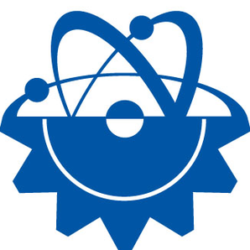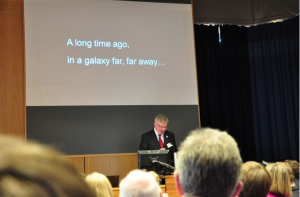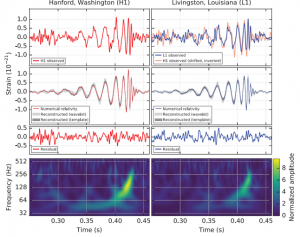“…A long time ago, in a galaxy far, far away…
Two black holes subdued to the gravitational pull and coalesced into a single entity. While coalescing, they violently rippled the space-time surface and on 14th September, 2015, these ripples reached planet Earth and were successfully recorded and deciphered.”
This is how the official press conference on the detection of gravitational waves by LIGO and VIRGO international scientific collaborations began in the University of Glasgow yesterday. The importance of this discovery cannot be overestimated. Many titans of modern science fit the discovery of gravitational waves into the same level of importance as observation of Higgs boson. There is a strong reason for that. The existence of gravitational waves was predicted right after the key postulates of the General Relativity Theory were published by Einstein. While studying the energy radiation processes during supernovae, neutron stars formation and collapses (stars turning into black holes), astrophysicists concluded many times that a significant portion of energy was radiated in a form of gravitational waves. So a lot of scientific effort was put into experimentally detecting gravitational waves in many countries all over the globe. There were claims of signal coming above the noise from time time, but all failed to either reproduce the results or correlate them with astrophysical calculations and other astronomical data. For example, when Earth saw the supernova in the Large Magellanic Cloud in 1987, a group from Rome claimed that they had registered the gravitational signal, but the claimed signal shape was a total mismatch with the data from astronomy, and as a result, they had to admit that their experiment’s methodology was flawed.
This is due to the fact that gravity is the weakest interaction known to science today. To discover the gravitational wave either a very sensitive detector is required, or an extreme astronomy event has to happen – and, preferably, not too far from Earth.
That’s why in 1992 the work was started on LIGO (Laser Interferometer Gravitational Observatory), the concept of which had been proposed by Kip Thorn, now known to the world as the producer of the “Interstellar” movie. The corresponding international collaboration involved scientists from all over the world, including Russia. Initially, the LIGO project included two detectors, one in Louisiana and another – in Washington. Another observatory, named VIRGO, was later constructed in Italy, near Pisa – so that scientists could not just confirm the detection, but also triangulate the signal and detect the source. In a short while, all scientists joined their effort in LSC (LIGO Scientific Collaboration), crafting extremely sophisticated scientific and engineering complexes. Thousands of people were committed to making this happen and hundreds of PhDs were defended, including mine. To illustrate the complexity – these facilities are able to record the relative movement of the so called probe masses with precision of meters 10-19 – four orders of magnitude lower than the size of most elements’ nuclei.
And finally, on 14th September 2015, LIGO scientists were able to detect the signal, distinctly above the noise level. A few months were required to decipher and check the findings together with theorists, and in January the scientists filed a paper to Physical Review Letters, published on 11th February 2016. There are hundreds of co-authors of this paper from 133 international research institutions, including Moscow State University. So I am proud to congratulate all the people who have taken part in this decades-long endeavor!
P.S. Many people ask about the practical use of gravitational waves. At the moment, it’s a hard question, especially in light of the complexity of facilities and monstrosity of computational effort required to decipher them. But let’s remember how humanity had encountered radio waves a century ago – their practical use wasn’t clear from the beginning either. The discovery of gravitational waves puts an end to the decades-long argument about the nature of gravity (which started as soon as the General Relativity Theory was formulated) and provides hope that the united field theory will finally see the light. That might include the agreement between theorists on the version of the quantum field gravity theory. But, anyway, there is hope that one day humans will learn how to generate gravitational waves – and become able to propel themselves in space in a better way.



